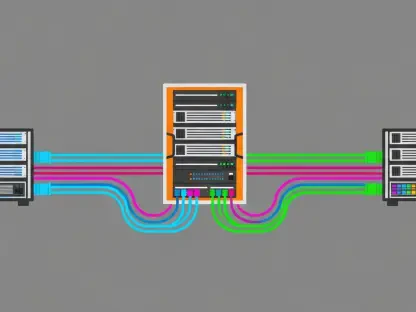Clinical data management (CDM) has undergone remarkable advancements, particularly since the introduction of electronic data capture (EDC) systems in the late 20th and early 21st centuries. Initially, CDM involved manual processes replete with potential for error, which delayed clinical trials and jeopardized patient safety. With the advent of new technologies, the processes have evolved substantially, enhancing the accuracy and efficiency crucial for developing new treatments and medicines.
Automation and Artificial Intelligence
One of the most transformative trends in clinical data management reconciliation is the integration of automation and artificial intelligence (AI). Traditional data checks, which were manually performed, are being replaced by AI models capable of scanning vast datasets to identify inconsistencies and suggest corrections. This technological shift not only reduces the likelihood of human error but also significantly accelerates the reconciliation process, thereby improving both accuracy and efficiency.
AI’s effectiveness in detecting anomalies, such as mismatched lab results, and proposing solutions based on learned patterns from historical data is revolutionizing clinical data management. These advanced AI algorithms ensure that the data relied upon for regulatory purposes is accurate and dependable. This development in AI is also enhancing compliance and overall trial integrity, setting new standards for what can be achieved in the field of clinical data management.
Cloud-Based Systems for Real-Time Reconciliation
Another significant advancement in CDM is the incorporation of cloud-based systems that facilitate real-time data reconciliation. Unlike periodic batch processing methods, which delay the identification and correction of data discrepancies, cloud technology allows for continuous data streaming and updates. This means that errors are detected and rectified almost instantaneously, minimizing delays and ensuring cleaner, more reliable data.
Real-time data collection from diverse sources, such as fitness trackers and laboratory results, enables trial teams to maintain continuous oversight of patient information. This constant data flow eliminates bottlenecks in data processing, improving the overall efficiency and accuracy of clinical trials. As a result, conditions are created where data transactions are smoother, and issues can be resolved more quickly.
Outsourcing CDM to Specialized Vendors
The increasingly popular trend of outsourcing clinical data management to specialized vendors is reshaping the landscape of CDM. Given the complexity and scale of modern clinical trials, the expertise offered by vendors specializing in particular types of studies or technology, such as imaging or wearable devices, becomes indispensable. These experts can provide additional services that enhance the overall efficiency of data management.
Centralized platforms provided by these vendors allow for robust data exchange, which is crucial for validating the outputs of multiple vendors involved in a clinical trial. Such platforms ensure that all data meets regulatory compliance standards and maintains data integrity. This model of outsourcing not only enhances efficiency but also brings specialized knowledge into the trial processes, contributing to better outcomes.
Standardization of Clinical Data
Standardization of clinical data is essential for the effectiveness of reconciliation efforts. The diverse formats in which data is collected can pose significant challenges, often making it difficult to maintain an organized clinical database. The Clinical Data Interchange Standards Consortium (CDISC) plays a pivotal role in this aspect by setting guidelines that simplify data comparison and reconciliation processes.
The adoption of standardized data formats across laboratories, device manufacturers, and clinical trial systems enables easier matching and verification of data. Standardization not only enhances the reliability of clinical data but also ensures a smoother and more precise reconciliation process. This alignment within the industry is crucial for fostering more efficient and error-free clinical trials.
Ensuring Regulatory Compliance
Regulatory compliance is a critical factor shaping the next generation of clinical data management reconciliation processes. Agencies such as the FDA and EMA require thorough audit trails to monitor every step undertaken during data reconciliation. Automation significantly aids in this aspect by meticulously logging all changes made, thus creating an authoritative source of information essential for drug approvals.
The integration of blockchain technology offers an additional layer of security and transparency. Blockchain functions as an immutable ledger for clinical databases, which protects against unauthorized alterations and ensures data integrity. This development is an important step towards enhanced regulatory compliance, providing the necessary assurance and security that health agencies demand.
Decentralization of Clinical Trials
The decentralization of clinical trials represents an emerging trend driven by the increasing use of wearable devices and telehealth applications. As patients contribute data from home or through online consultations, the trial data becomes more diverse and complex. Managing this influx of data from various third-party sources necessitates advanced reconciliation tools capable of processing and harmonizing information from multiple origins.
Decentralized trials are inherently more patient-centric, offering flexibility that allows patients to participate in trials without traveling to centralized locations. As a result, advanced reconciliation tools ensure that data accuracy is not compromised, regardless of its diverse origins. This approach not only enhances patient adherence but also broadens the scope of clinical trials, making them more inclusive.
Collaborative Platforms
Clinical data management (CDM) has experienced significant progress, especially with the implementation of electronic data capture (EDC) systems starting in the late 20th and early 21st centuries. Originally, CDM relied heavily on manual methods, which were prone to errors and could lead to lengthy delays in clinical trials, thereby compromising patient safety. The incorporation of advanced technologies has drastically transformed these processes, making them considerably more accurate and efficient. These improvements have been instrumental in the development of new treatments and medicines, ensuring that clinical trials run more smoothly, and data integrity is maintained. The move from paper-based systems to sophisticated EDC platforms has streamlined the workflow, reduced the risk of human error, and provided real-time access to data. This technological leap not only saves time and resources but also enhances the overall reliability of clinical research, reinforcing the importance of continued innovation in CDM for the advancement of healthcare.









